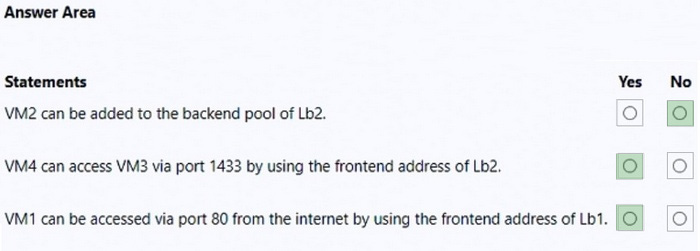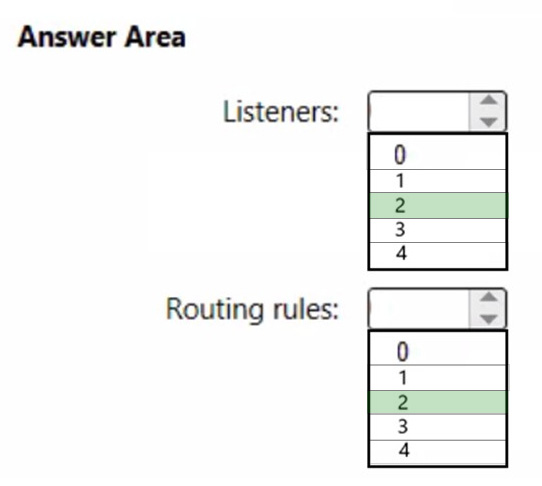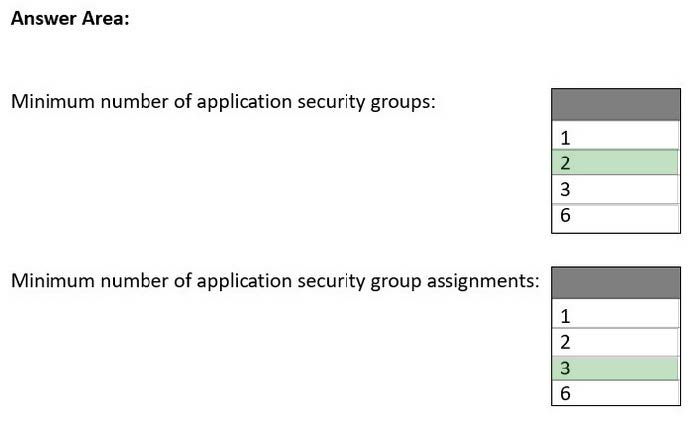Exam Details
Exam Code
:AZ-700Exam Name
:Designing and Implementing Microsoft Azure Networking SolutionsCertification
:Microsoft CertificationsVendor
:MicrosoftTotal Questions
:390 Q&AsLast Updated
:Mar 23, 2025
Microsoft Microsoft Certifications AZ-700 Questions & Answers
-
Question 21:
HOTSPOT
You have an Azure subscription that contains the resource groups shown in the following table.

You have the virtual networks shown in the following table.

Vnet1 contains two virtual machines named VM1 and VM2. Vnet2 contains two virtual machines named VM3 and VM4. You have the network security groups (NSGs) shown in the following table that include only default rules.

You have the Azure load balancers shown in the following table.
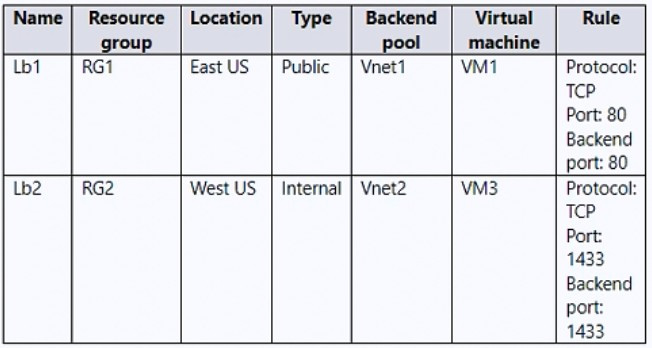
For each of the following statements, select Yes if the statement is true. Otherwise, select No.
NOTE: Each correct selection is worth one point.
Hot Area:
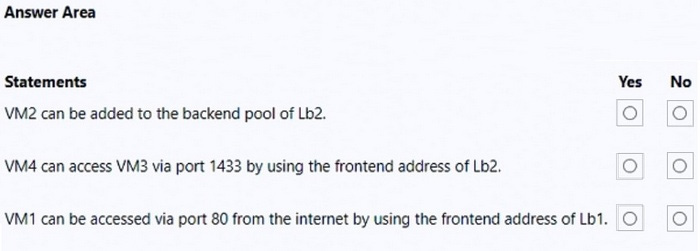
-
Question 22:
HOTSPOT
You have the hybrid network shown in the Network Diagram exhibit.
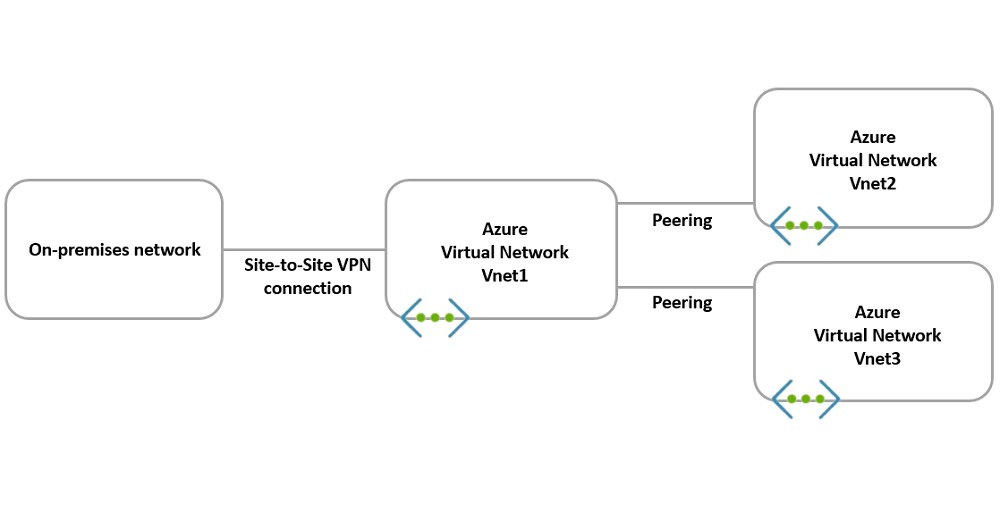
You have a peering connection between Vnet1 and Vnet2 as shown in the Peering-Vnet1-Vnet2 exhibit.
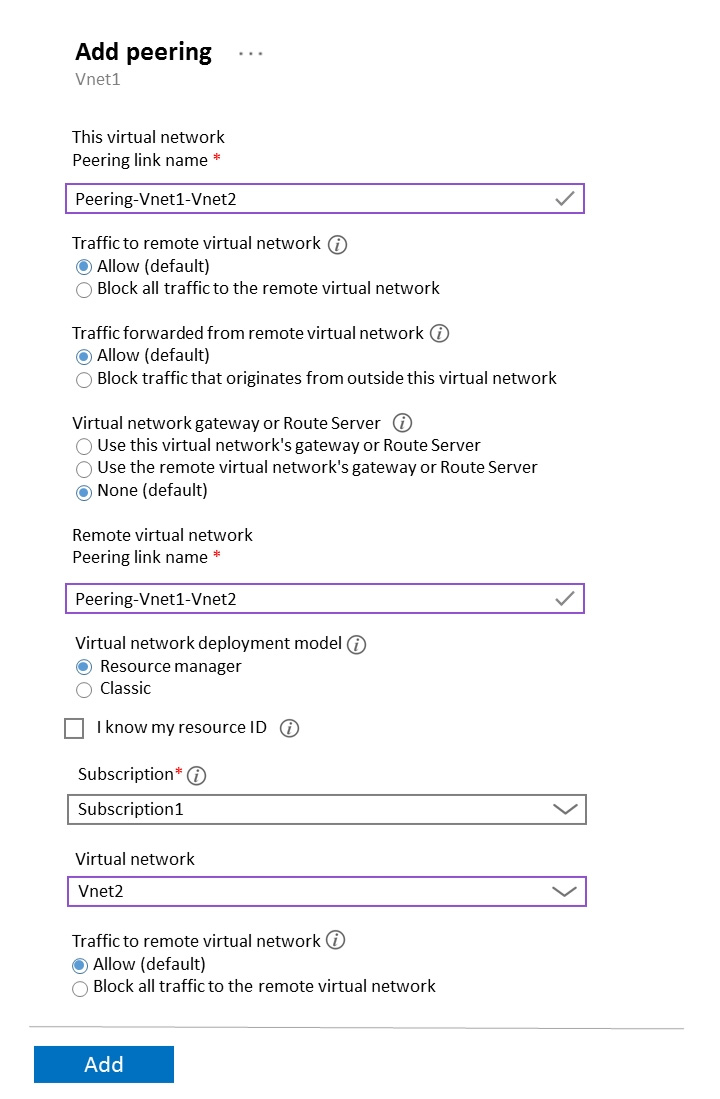
You have a peering connection between Vnet1 and Vnet3 as shown in the Peering-Vnet1-Vnet3 exhibit.
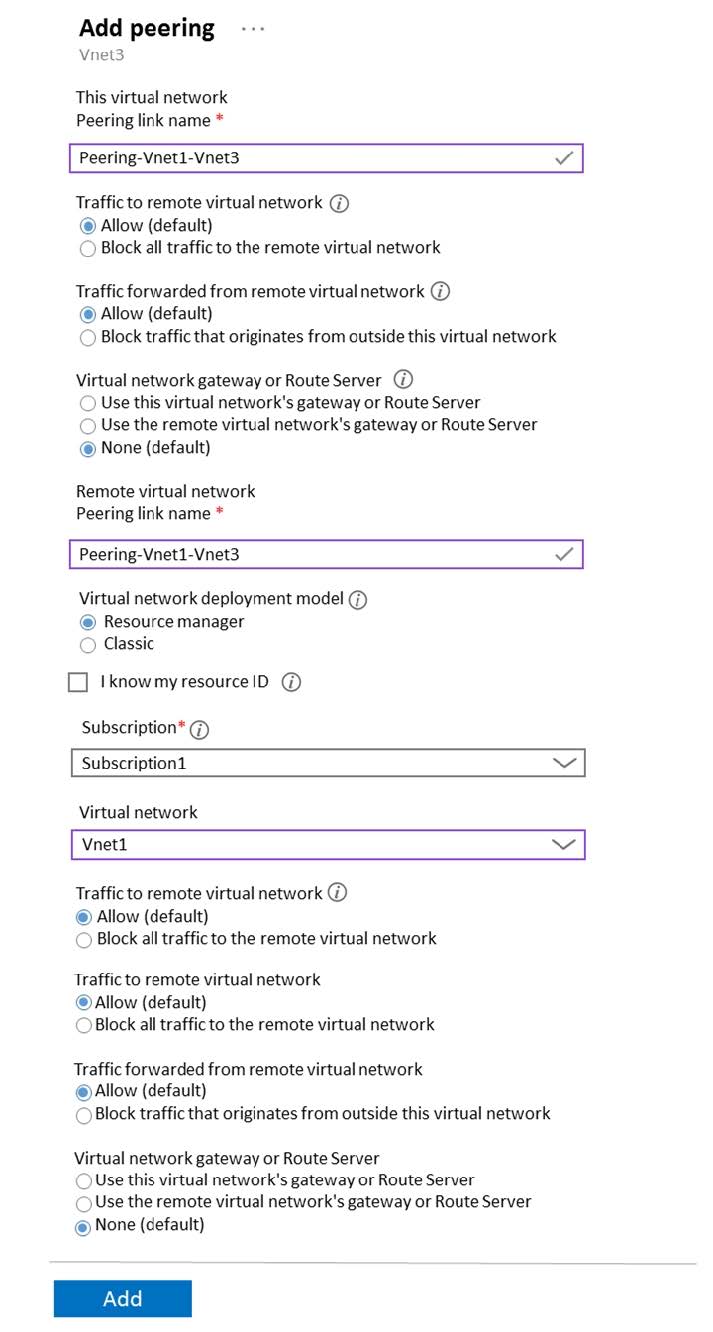
For each of the following statements, select Yes if the statement is true. Otherwise, select No.
NOTE: Each correct selection is worth one point.
Hot Area:
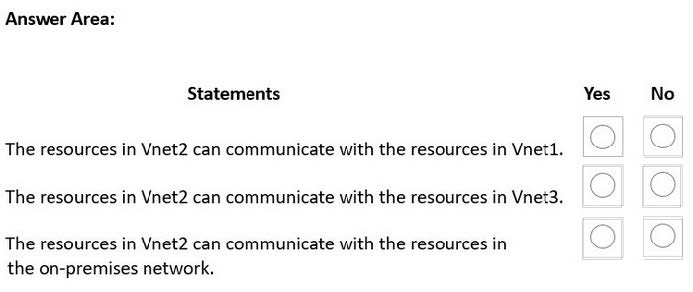
-
Question 23:
HOTSPOT
You have two Azure App Service instances that host the web apps shown the following table.

You deploy an Azure 2 that has one public frontend IP address and two backend pools.
You need to publish all the web apps to the application gateway. Requests must be routed based on the HTTP host headers.
What is the minimum number of listeners and routing rules you should configure? To answer, select the appropriate options in the answer area.
NOTE: Each correct selection is worth one point.
Hot Area:
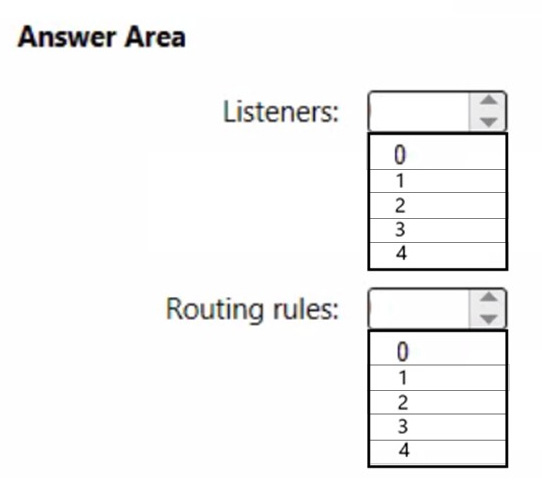
-
Question 24:
HOTSPOT
You have an Azure subscription that contains the virtual machines shown in the following table.

VNet1 and VNet2 are NOT connected to each other.
You need to block traffic from SQL Server 2019 to IIS by using application security groups. The solution must minimize administrative effort.
How should you configure the application security groups? To answer, select the appropriate options in the answer area.
NOTE: Each correct selection is worth one point.
Hot Area:

-
Question 25:
HOTSPOT
You have an Azure subscription. The subscription contains virtual machines that host websites as shown in the following table.

You have the Azure Traffic Manager profiles shown in the following table.

You have the endpoints shown in the following table.

For each of the following statements, select Yes if the statement is true. Otherwise, select No.
NOTE: Each correct selection is worth one point.
Hot Area:

-
Question 26:
HOTSPOT
You have an Azure subscription that contains the resources shown in the following table.

The virtual network topology is shown in the following exhibit.

Firewall1 is configured as shown in following exhibit.
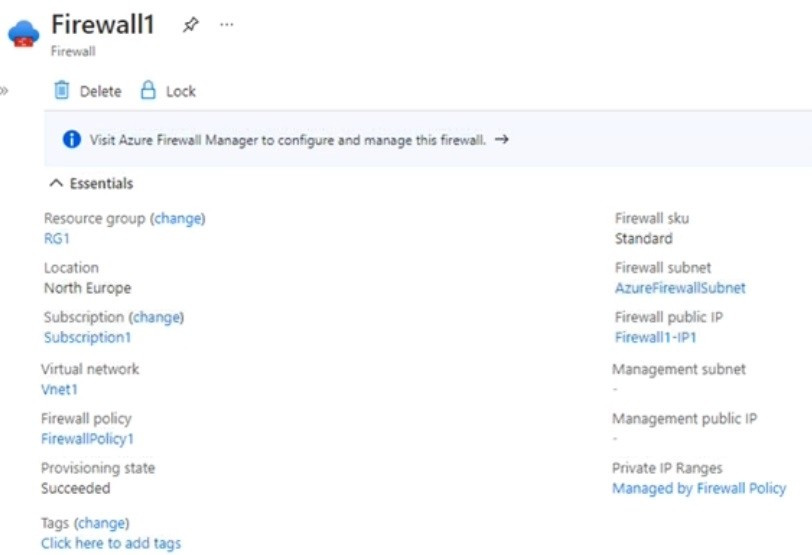
FirewallPolicy1 contains the following rules:
1.
Allow outbound traffic from Vnet1 and Vnet2 to the internet.
2.
Allow any traffic between Vnet1 and Vnet2.
No custom private endpoints. service endpoints. routing tables, or network security groups (NSGs) were created. For each of the following statements, select Yes if the statement is true. Otherwise, select No. NOTE: Each correct selection is worth one point.
Hot Area:

-
Question 27:
HOTSPOT
You have two Azure subscriptions named Subscription1 and Subscription2. There are no connections between the virtual networks in two subscriptions.
You configure a private link service as shown in the privatelinkservice1 exhibit. (Click the privatelinkservice1 tab.)

You create a load balancer name in Subscription1 and configure the backend pool shown in the lb1 exhibit. (Click tie 1b1 tab.)

You create a private endpoint in Subscription2 as shown in the privateendpoint4 exhibit. (Click the privateendpoint4)
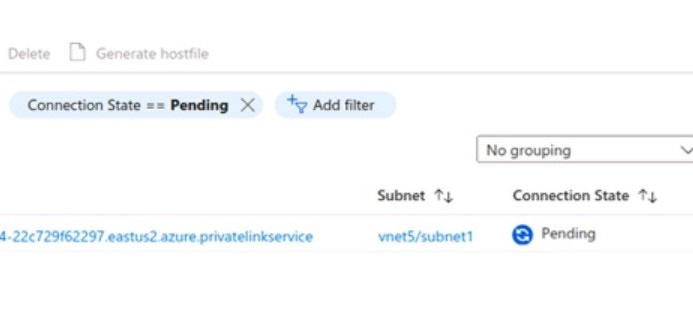
For each of the following statements, select YES if the statement is true. Otherwise. select No.
Hot Area:

-
Question 28:
You have the Azure App Service app shown below.

The VNet Integration settings for as123 are configured as shown below.

The Private Endpoint connections settings for as123 are configured as shown below.
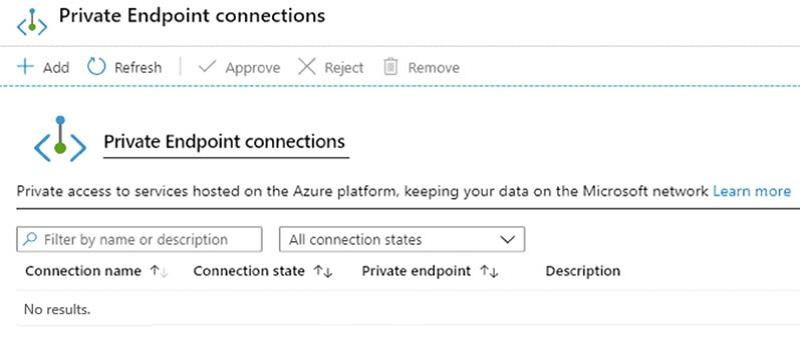
Select Yes of the below statement is true. Otherwise, select No.
Hot Area:
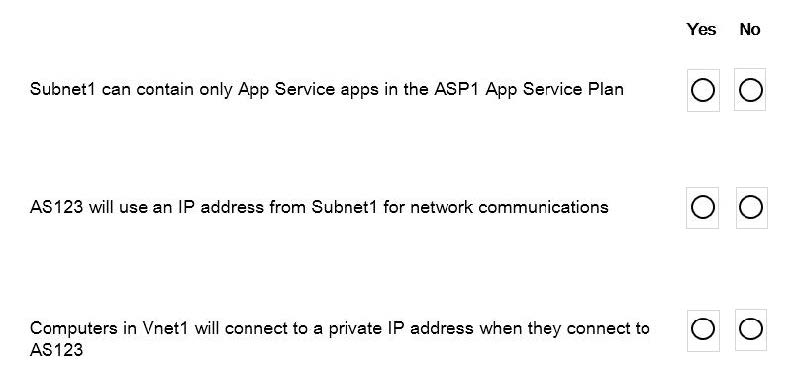
-
Question 29:
HOTSPOT
You have the network topology shown in the Topology exhibit. (Click the Topology tab.)

You have the Azure firewall shown in the Firewall 1 exhibit. (Click the Firewall tab.)
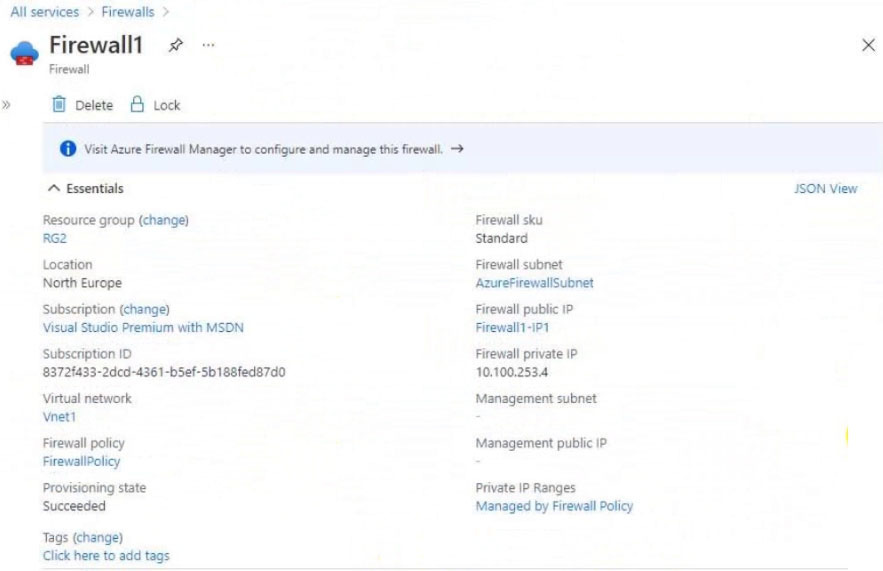
You have the route table shown in the RouteTable1 exhibit. (Click the RouteTable1 tab.)
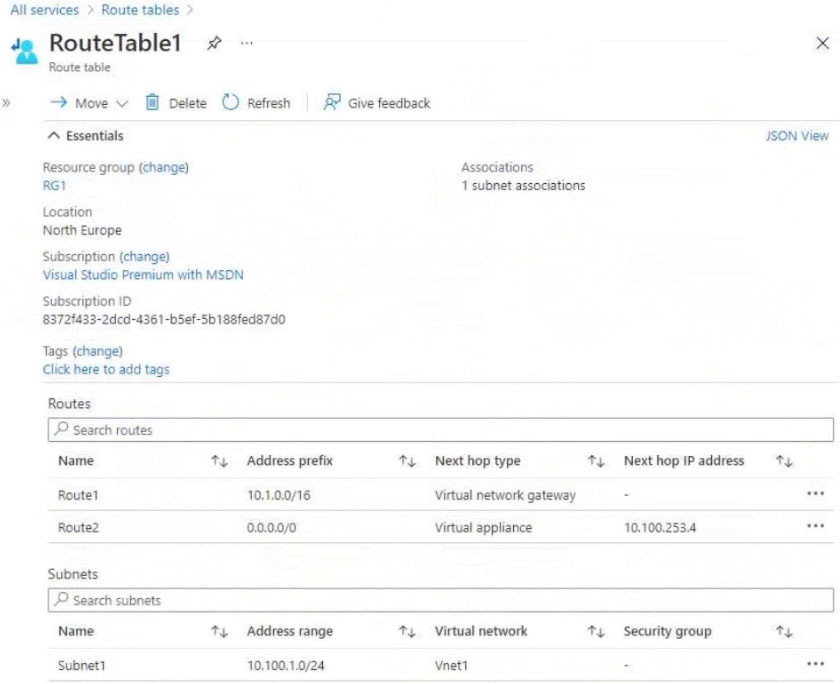
For each of the following statements, select Yes if the statement is true. Otherwise, select No. NOTE: Each correct selection is worth one point.
Hot Area:

-
Question 30:
HOTSPOT
You configure a route table named RT1 that has the routes shown in the following table.

You have an Azure virtual network named Vnet1 that has the subnets shown in the following table.

You have the resources shown in the following table.

Vnet1 connects to an ExpressRoute circuit. The on-premises router advertises the following routes:
1.
0.0.0.0/0
2.
10.0.0.0/16
For each of the following statements, select Yes if the statement is true. Otherwise, select No.
NOTE: Each correct selection is worth one point.
Hot Area:

Related Exams:
62-193
Technology Literacy for Educators70-243
Administering and Deploying System Center 2012 Configuration Manager70-355
Universal Windows Platform – App Data, Services, and Coding Patterns77-420
Excel 201377-427
Excel 2013 Expert Part One77-725
Word 2016 Core Document Creation, Collaboration and Communication77-726
Word 2016 Expert Creating Documents for Effective Communication77-727
Excel 2016 Core Data Analysis, Manipulation, and Presentation77-728
Excel 2016 Expert: Interpreting Data for Insights77-731
Outlook 2016 Core Communication, Collaboration and Email Skills
Tips on How to Prepare for the Exams
Nowadays, the certification exams become more and more important and required by more and more enterprises when applying for a job. But how to prepare for the exam effectively? How to prepare for the exam in a short time with less efforts? How to get a ideal result and how to find the most reliable resources? Here on Vcedump.com, you will find all the answers. Vcedump.com provide not only Microsoft exam questions, answers and explanations but also complete assistance on your exam preparation and certification application. If you are confused on your AZ-700 exam preparations and Microsoft certification application, do not hesitate to visit our Vcedump.com to find your solutions here.
